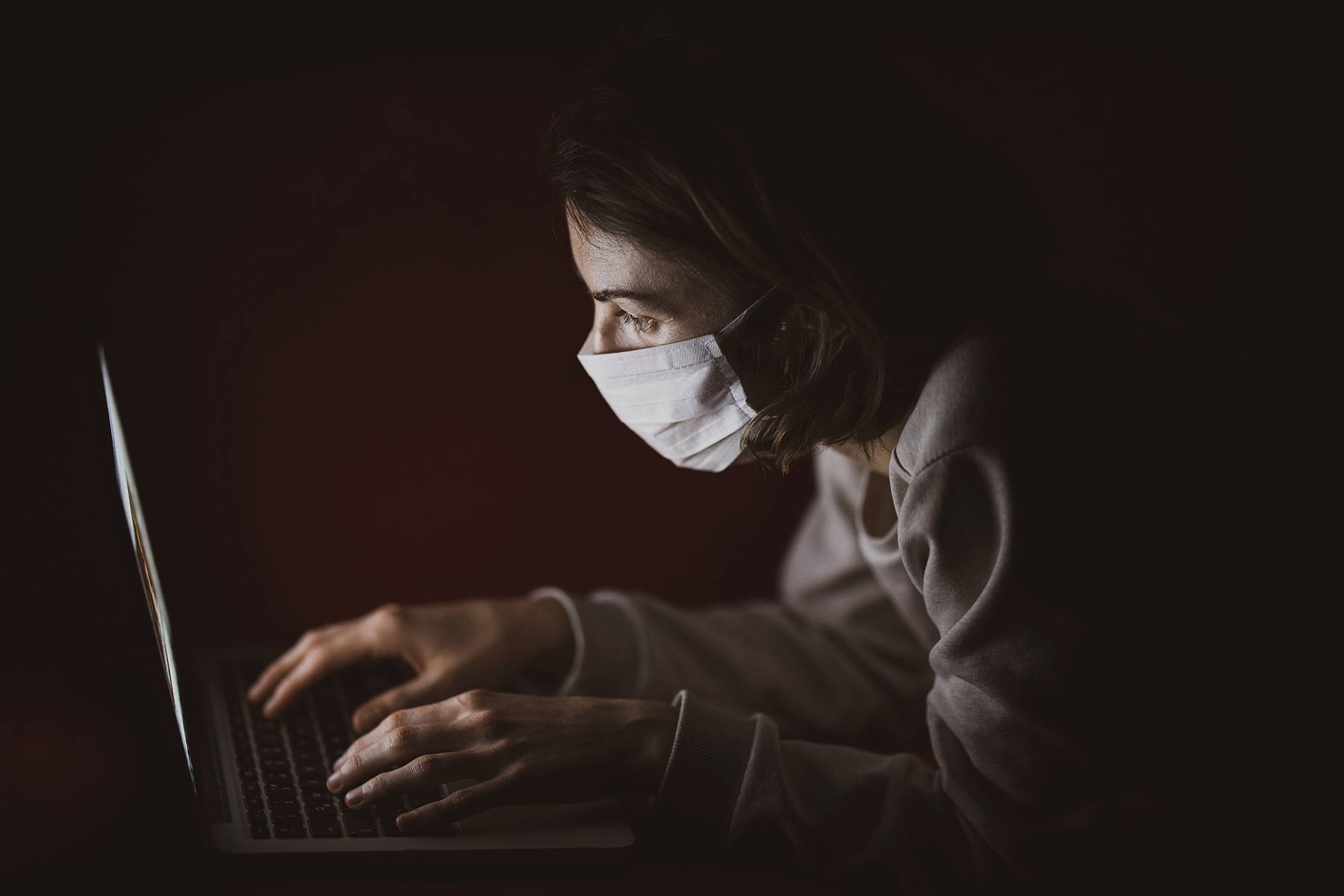Medical Analysis on Face Mask Use

“Healthy People Should Not Wear Face Masks”
“Mask wearers frequently report symptoms of difficulty breathing, shortness of breath, headache, lightheadedness, dizziness, anxiety, brain fog, difficulty concentrating, and other subjective symptoms while wearing medical masks. As a surgeon, I have worn masks for prolonged periods of time in thousands of surgeries and can assure you these symptoms do occur when surgical masks are worn for extended periods of time. The longer a surgical mask is worn, the more saturated with moisture it becomes, and the more significantly it inhibits the inflow of oxygen and outflow of carbon dioxide.” …Read More
During the COVID-19 pandemic, public health experts began telling us to follow a number of disease mitigation strategies that sounded reasonably scientific, but actually had little or no support in the scientific literature.
Renowned neurosurgeon, Russell Blaylock, MD had this to say about the science of masks: As for the scientific support for the use of face mask, a recent careful examination of the literature, in which 17 of the best studies were analyzed, concluded that, “None of the studies established a conclusive relationship between mask/respirator use and protection against influenza infection.”[R] “
Keep in mind, no studies have been done to demonstrate that either a cloth mask or the N95 mask has any effect on transmission of the COVID-19 virus. Any recommendations, therefore, have to be based on studies of influenza virus transmission. The fact is, there is no conclusive evidence of their efficiency in controlling flu virus transmission.” – Russell Blaylock, MD
You can read Dr. Blaylock’s brilliant discussion of this matter at this link: Blaylock: Face Masks Pose Serious Risks to the Healthy
Continuation Of The Article:
“Face Masks Decrease Oxygen, Increase Carbon Dioxide & Alter Breathing In Ways That Increase Susceptibility & Severity of COVlD-19”
“In fact, clinical research shows that medical masks lower blood oxygen levels[R] and raise carbon dioxide blood levels.[R] The deviations in oxygen and carbon dioxide may not reach the clinical criteria for hypoxia (low blood oxygen), hypoxemia (low tissue oxygen), or hypercapnia (elevated blood carbon dioxide), but they can deviate enough to cause even healthy individuals to become symptomatic, as occurred with the surgeons studied and published in this report:
Preliminary Report on Surgical Mask Induced Deoxygenation During Major Surgery
At the same time masks inhibit oxygen intake, they trap the carbon dioxide rich breath in the mouth/mask inter-space. Thus, a fraction of carbon dioxide previously exhaled is inhaled at each respiratory cycle.
Masks force you to re-breathe a portion of your own breath, including all the stuff (infectious viral particles) the lungs were trying to remove from the body (more on this later).
As medical masks lower oxygen and raise carbon dioxide in the blood, the brain senses the changes and the risk they pose to the maintenance of normal physiology. Thus, the brain goes to work to bring things back in order. To obtain more oxygen and remove more carbon dioxide, the brain tells the lungs to increase the rate (frequency) and depth of breaths.[R] Unfortunately, struggle as they may, your brain and lungs can not fully compensate for the negative effects of the mask. Some may even suffer the symptoms of carbon dioxide toxicity.
For people with diseases of the lungs, especially chronic obstructive pulmonary disease (COPD), face masks are intolerable to wear as they worsen breathlessness.[R]
In the case of respiratory pathogens, the negative effects of masks and the respiratory changes they induce could increase susceptibility and transmission of CoVID-19, as well as other respiratory pathogens.
Viral particles move through face masks with relative ease. Studies show that about 44% of viral particles pass through surgical masks, 97% pass through cloth masks, and about 5% through N95 masks. Increasing tidal volume (depth of breaths) results in literally sucking more air, more forcefully through and around the mask. Any SARS CoV-2 particles on, in, or around the mask are more forcefully suctioned into the mouth and lungs as a result of the compensatory increases in tidal volume.
The changes in respiratory rate and depth may also increase the severity of CoVID-19 as the increased tidal volume delivers the viral particles deeper into the lungs.
These changes may worsen the community transmission of CoVID-19 when infected people wearing masks exhale air more heavily contaminated with viral particles from the lungs.
These effects are amplified if face masks are contaminated with the viruses, bacteria, or fungi that find their way or opportunistically grow in the warm, moist environment that medical masks quickly become.
Despite the scientific evidence to the contrary, public health experts claim that medical masks do not cause clinically significant hypoxia (low oxygen) and hypercapnia (high CO2). I would like to ask those experts to explain the growing number of cases in which medical masks worn during exercise have resulted in lung injuries and heart attacks:
Two Chinese boys drop dead during PE lessons while wearing face masks amid concerns over students’ fitness following three months of school closure [R][R]
Jogger’s lung collapses after he ran for 2.5 miles while wearing a face mask [R]
If medical masks were perfectly safe and effective, then why would healthy boys suffer heart attacks or a 26 year old man collapse his lung while wearing masks and running?! In my opinion, these are tragic examples of the risks of wearing medical masks. And we are only getting started.”
